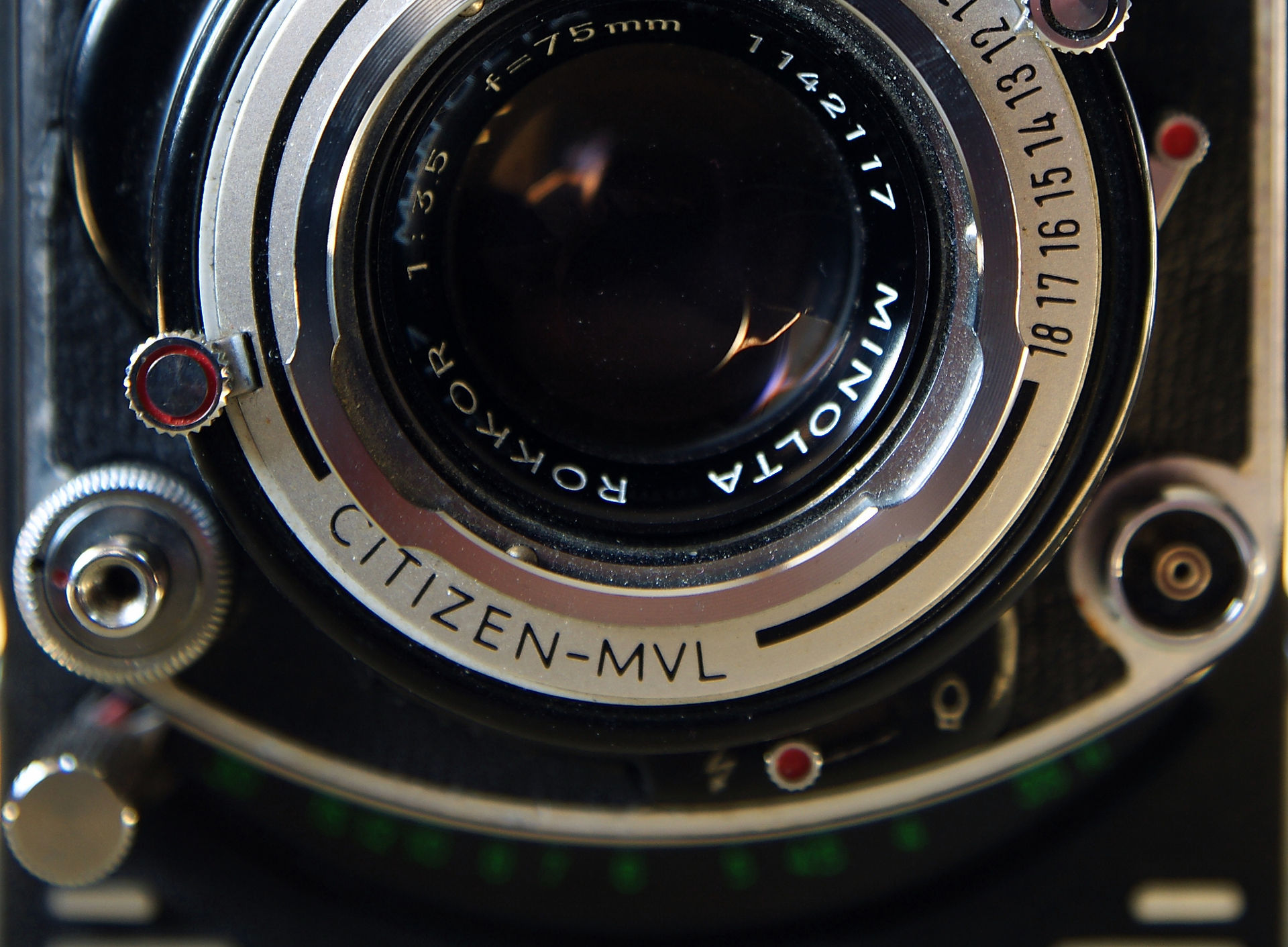
AUTOCORD : the Minolta's TLR
by Fred
History of the Minolta's TLR
1936 - 1943 : Minoltaflex
The Minoltaflex is Japan's first commercialized twin-lens 6x6 view format using 120 type film.
Taking lens : Promar anastigmat 1:3.5 / f=75 mm on Crown II-Tiyoko; B, 1s until 1/300th.
Viewer : Minolta anastigmat 1:3.2 / f=75 mm.
Rolleicord identical chassis, the camera viewfinder is comparable to Ikoflex. Sometimes available with a Compur.
1936 : developement of the prototype.
1937 : marketing of the camera.
"Minolta" straight font. Compur shutter : T, B, 1 to 1/300 sec. "MTS" logo on viewing hood.
"Minolta" slanted font. Crown II shutter : T, 1 to 1/300 sec or T, B, 1 to 1/300 sec.
1939 : Crown II shutter : B, 1 to 1/300 sec from serial n° 9001.
1941 : "Tiyoko" logo on viewing hood from serial n° 17001.


Note :
The film advance system is not automatic. Though...
The bottom is provided with an inactinic window to see the film paper tape indications. But the window is aligned with the 6x9 view format numbering line on the current rolls. The 6x6 numbering is on the middle line.
When loading a film, wind up to place the large black arrows in the middle of the exposure window. Close the cover and turn the knob six full turns (or until you see the number 1 in the safelight window and make a half turn more); set the frame counter to 1 by pressing the two chromed buttons at the same time.
After each shot, the shutter release button is held halfway, preventing the shutter from being cocked (and double exposure). Press the upper button to unlock the thumbwheel. Advance the film to the next view, than the thumbwheel is locked. The shutter is ready to be armed and triggered.
After the 12th photo, the counter shows "0" and the film can be wound up to the end.
Operation tested personally on one camera from 1938 and another from 1940.
The understanding of this system allowed me to correct a defect present on a 1942 camera in order to make the operation working conformly.
1939 - 1943 : Minolta Automat
Rolleiflex type, automatic arming and film advance with crank.
Taking lens : Promar anastigmat 1:3.5 / f=75 mm on Crown II-Tiyoko; B, 1s until 1/300th.
Viewer : Minolta anastigmat 1:3.2 / f=75 mm.
The focus wheel is located on the left hand side.

1950 : Minoltaflex II, IIB et III.
II (1950-1951) : Chiyoko Rokkor 1:3.5 / f=75 mm on S-Konan-Rapid; B, 1s until 1/500th. Viewer : Minolta anastigmat 1:3.2 / f=75 mm.
IIb (1952) : semi-automatic film advance (the inactinic window disappears).
III (1953) : the shutter is a Seikosha Rapid; B, 1s until 1/500th. Viewer : View-Rokkor 1:3.2 / f=75 mm.
Some cameras may have the "Made in occupied Japan" mention on a strap fastener.
The Minoltaflex III lenses are equiped with Bay I bayonet.


1953 - 1954 : Minoltacord.
Autocord's precursor. Chiyoko Promar S II 1:3.5 / f=75 mm on Seikosha Rapid (B, 1s until 1/500th) or Optiper MXS (B, 1s until 1/400th) or Citizen (B, 1s until 1/300th).
Viewer : View-Rokkor 1:3.2 / f=75 mm.
The crank only advances the film, it doesn't arm the shutter (lever on right hand side of taking lens).
Focus lever in front.
Some cameras may have the "Made in Japan" mention on a strap fastener.
Lenses have a 34 mm thread.
The Optiper MXS model has a focus scale in "feet", the two pushing buttons on the hood side are removed.

1954 - 1956 : Minoltacord automat.
Predecessor of the Autocord.
Rokkor 1:3.5 / f=75 mm on Citizen; B, 1s until 1/300th.
Viewer : View-Rokkor 1:3.2 / f=75 mm.

1955 - 1966 : Minolta Autocord.
The most famous 6x6 of Minolta.
Rokkor 1:3.5 / f=75 mm on Optiper, Seikosha or Citizen; B, 1s until 1/400th or 1/500th.
Viewer : View-Rokkor 1:3.2 / f=75 mm.
24 versions. A simple different detail creates a new version (read the "Models" page).

Pictures : Fred